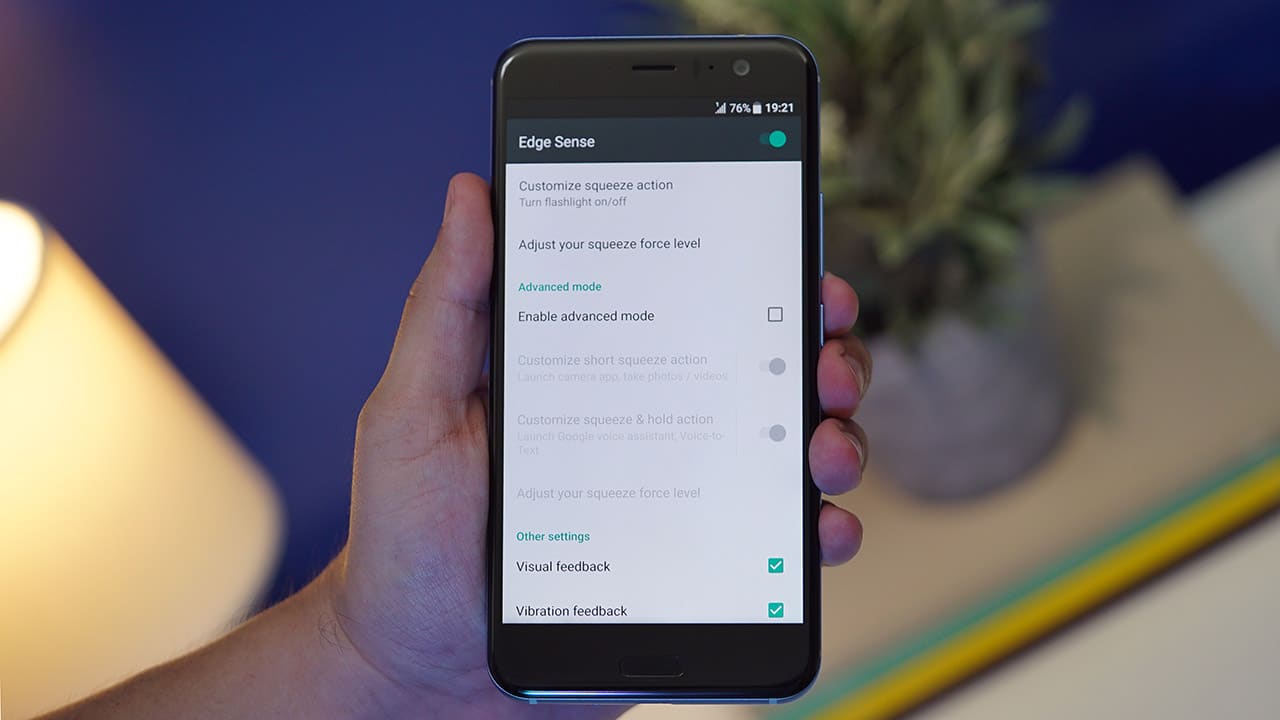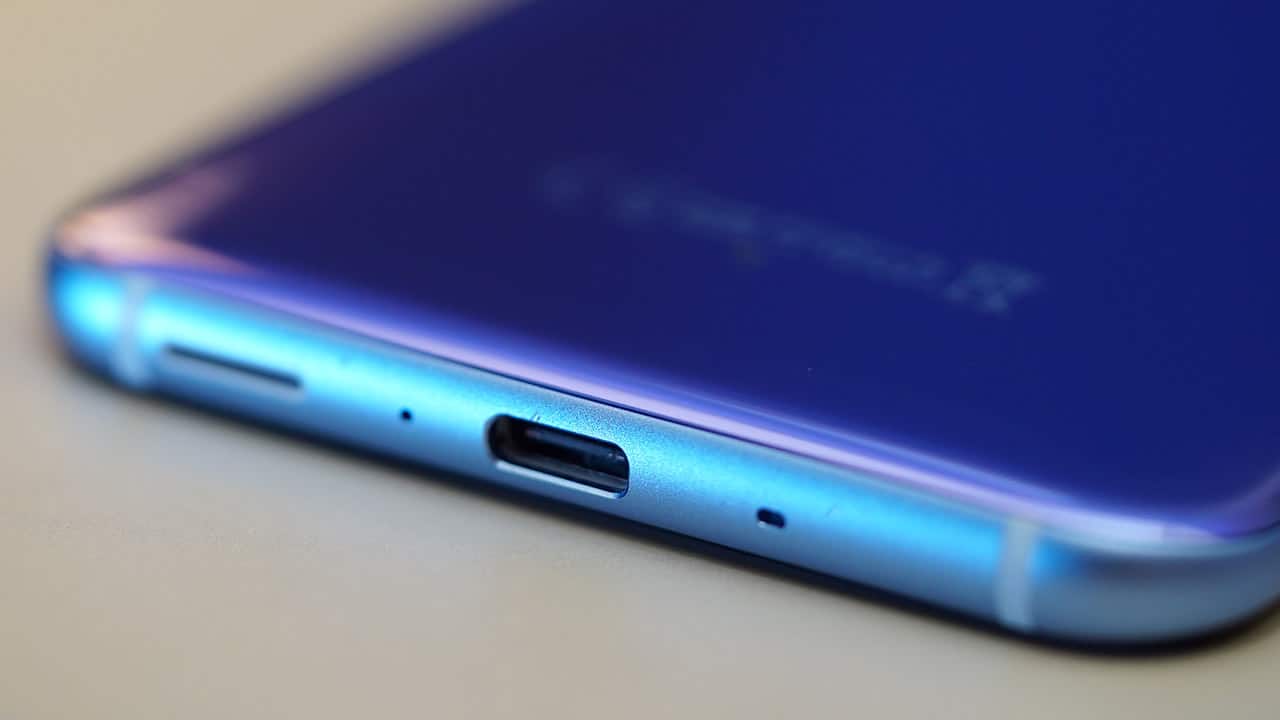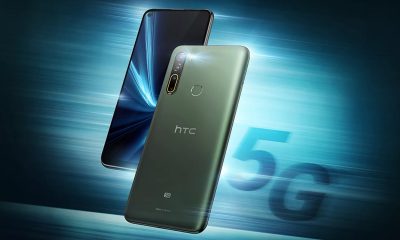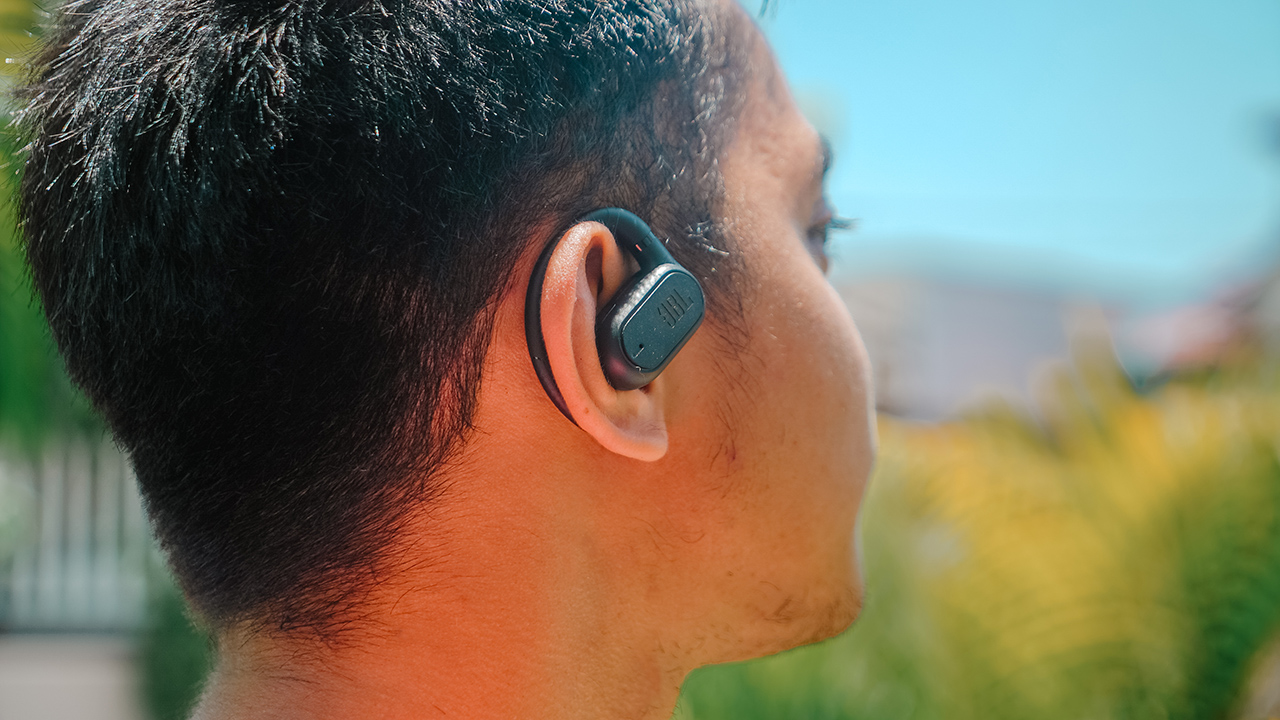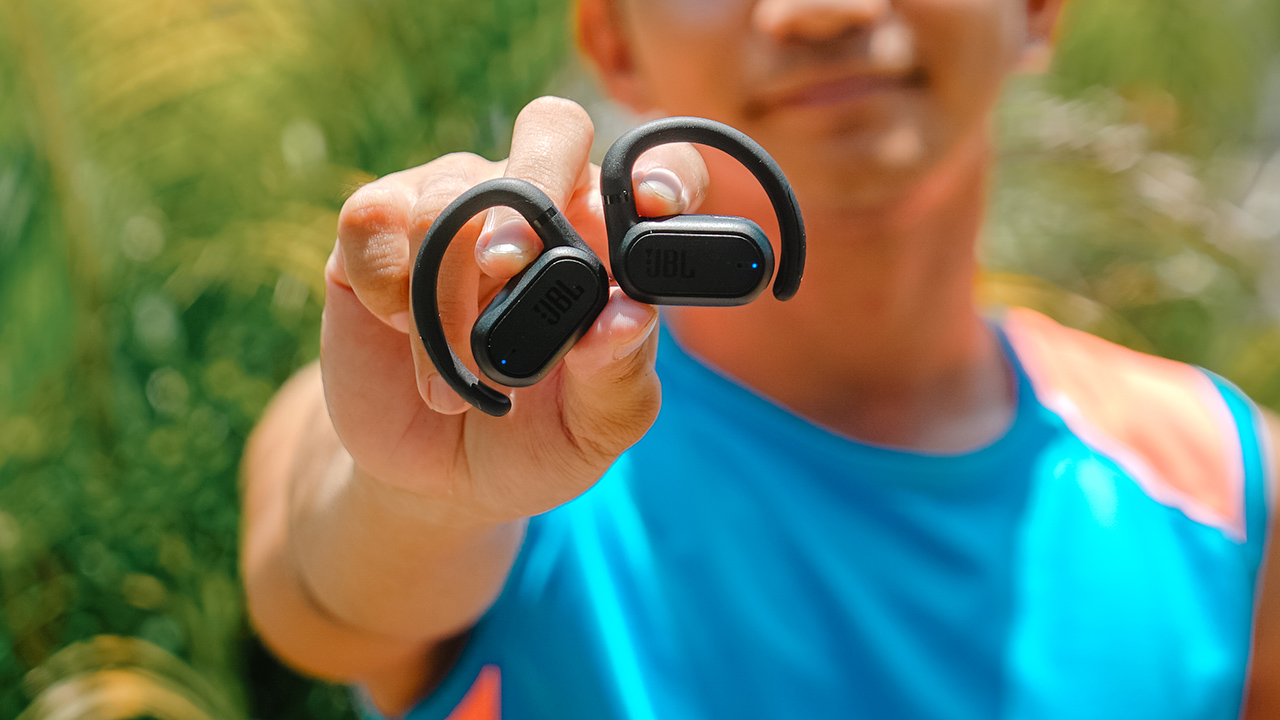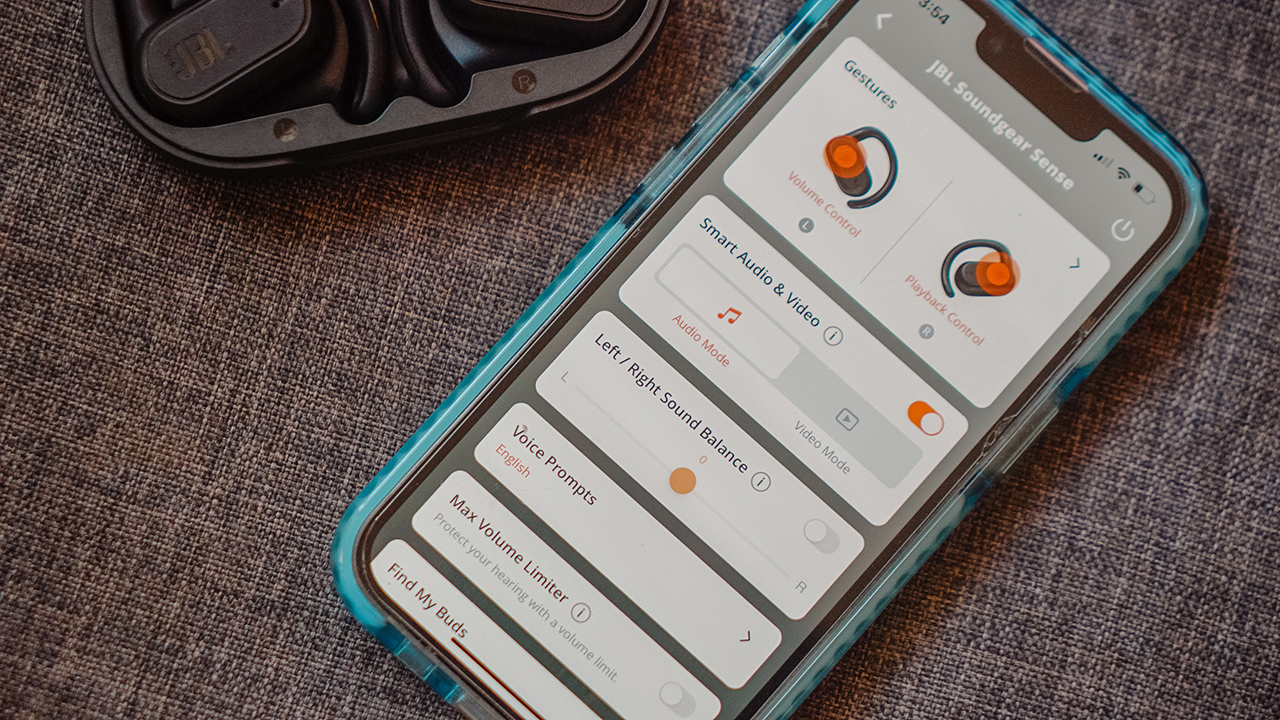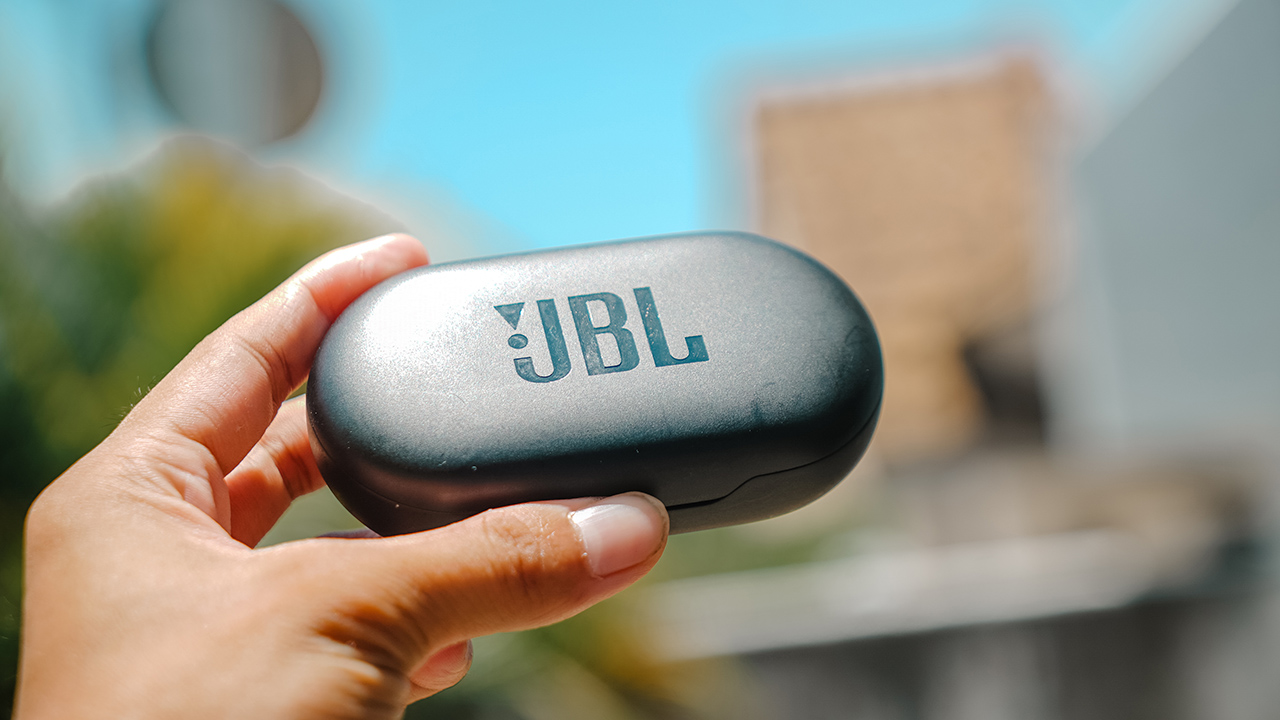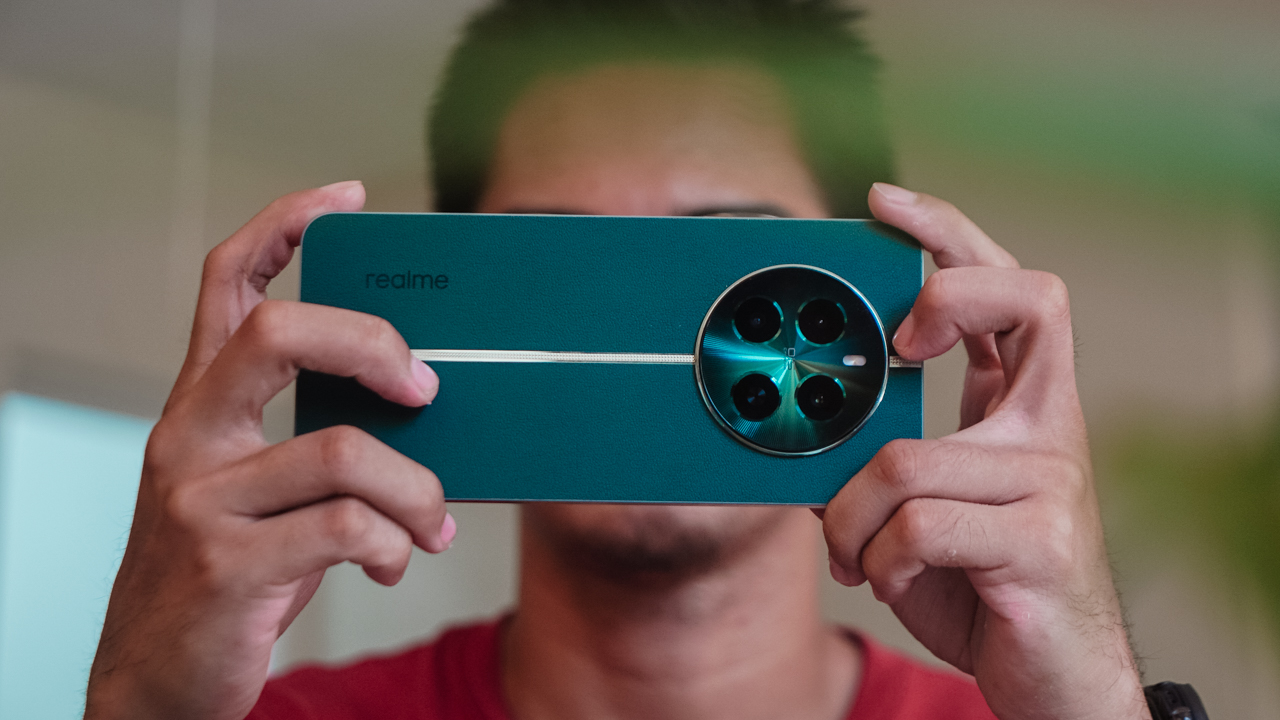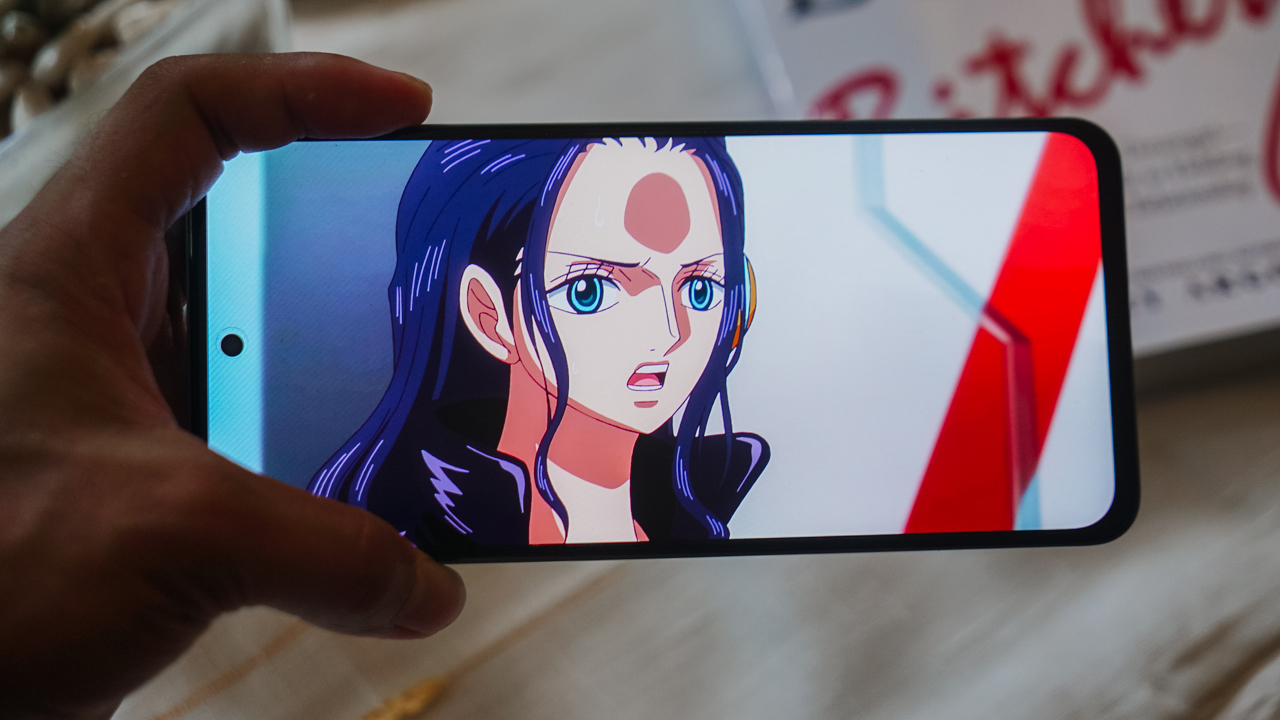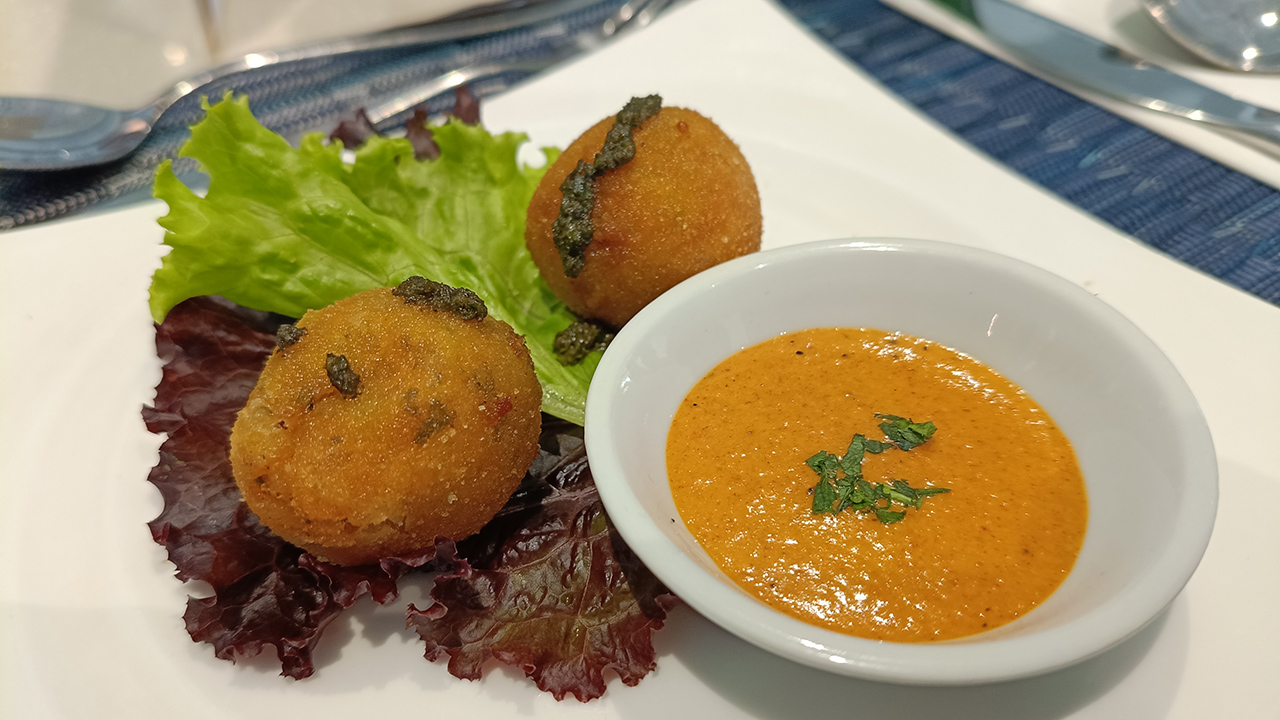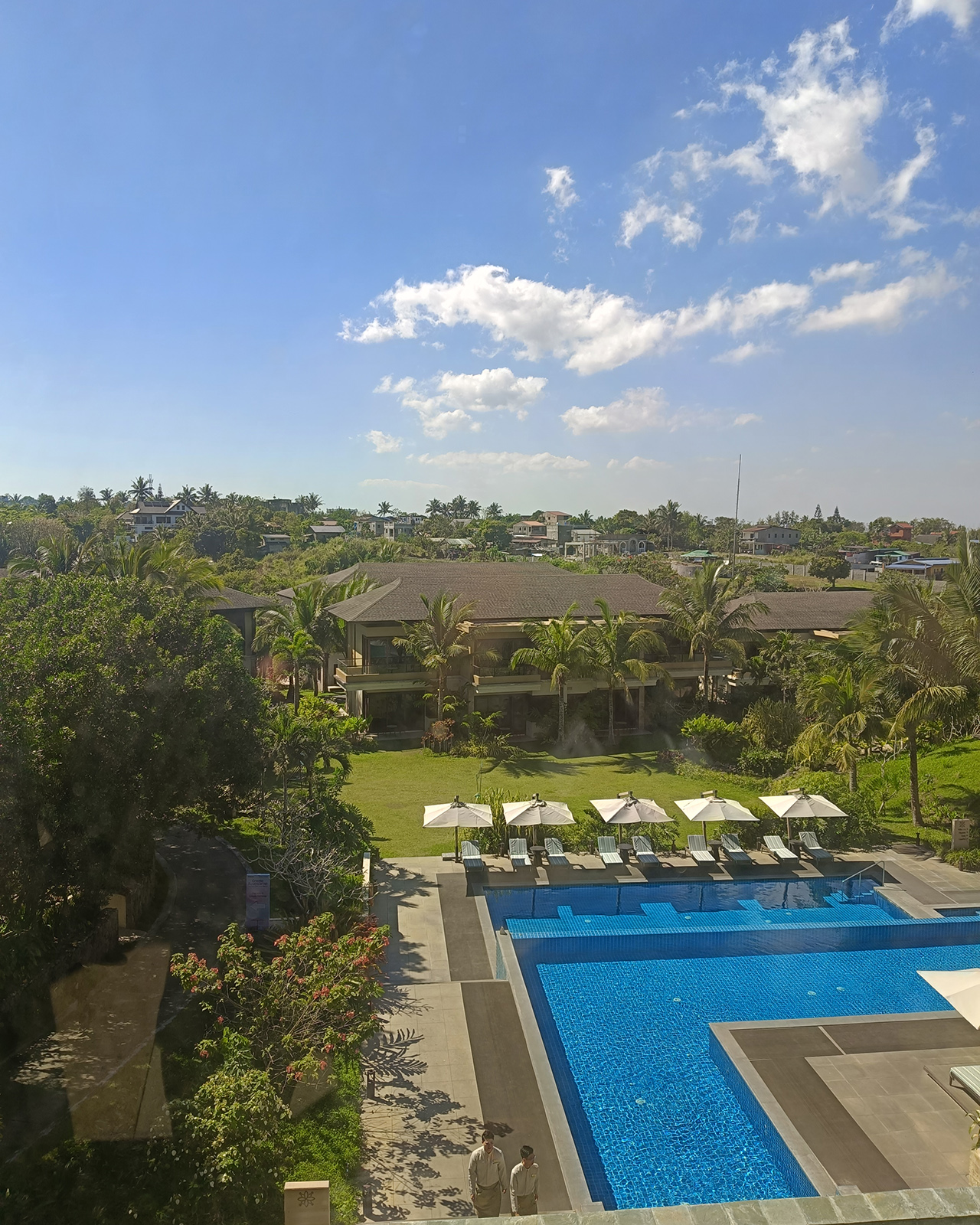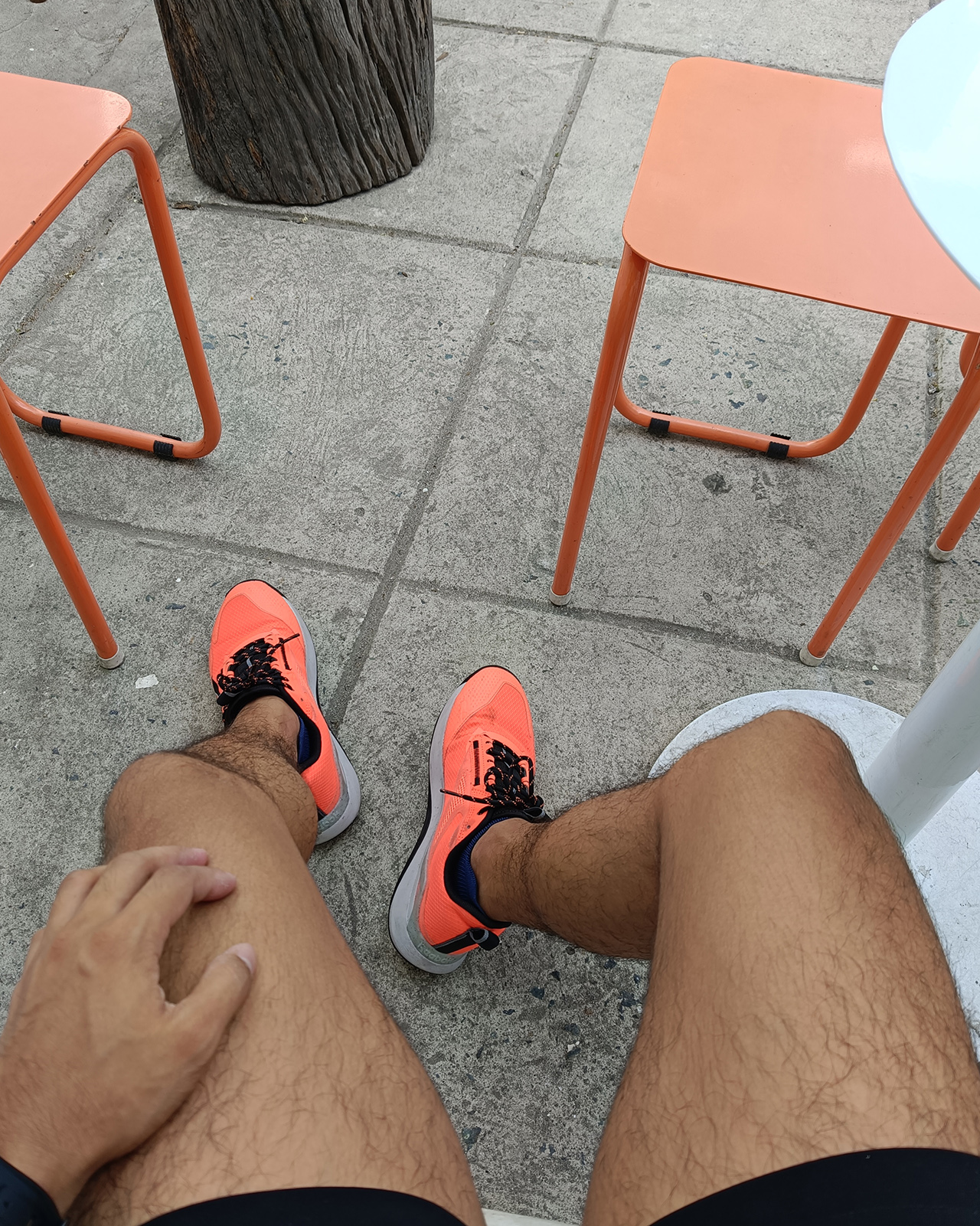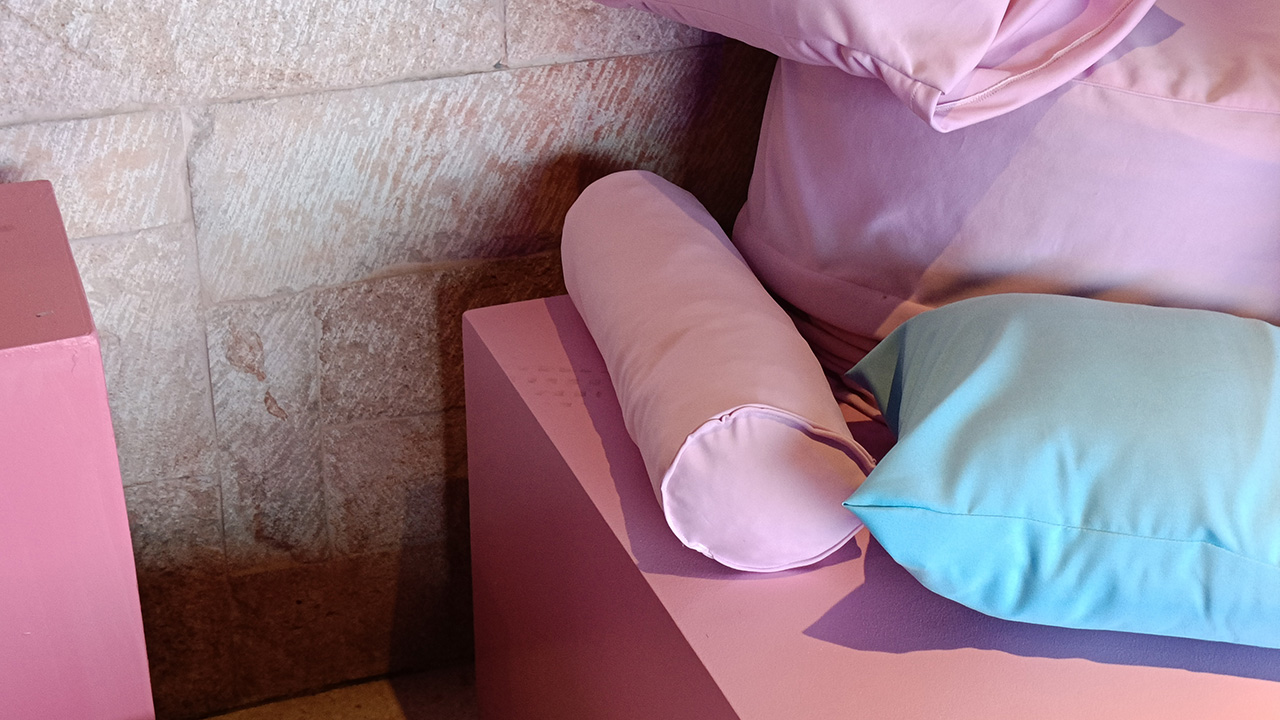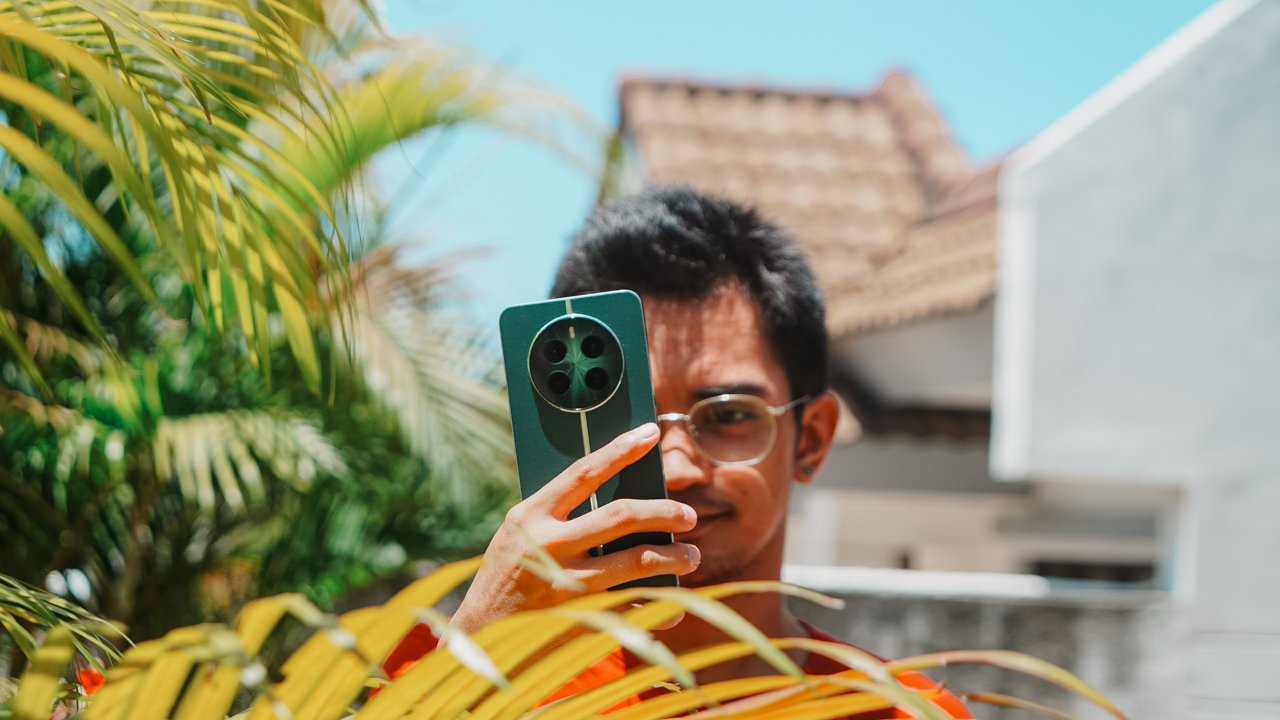Reviews
HTC U11 Review: Better than the Pixel
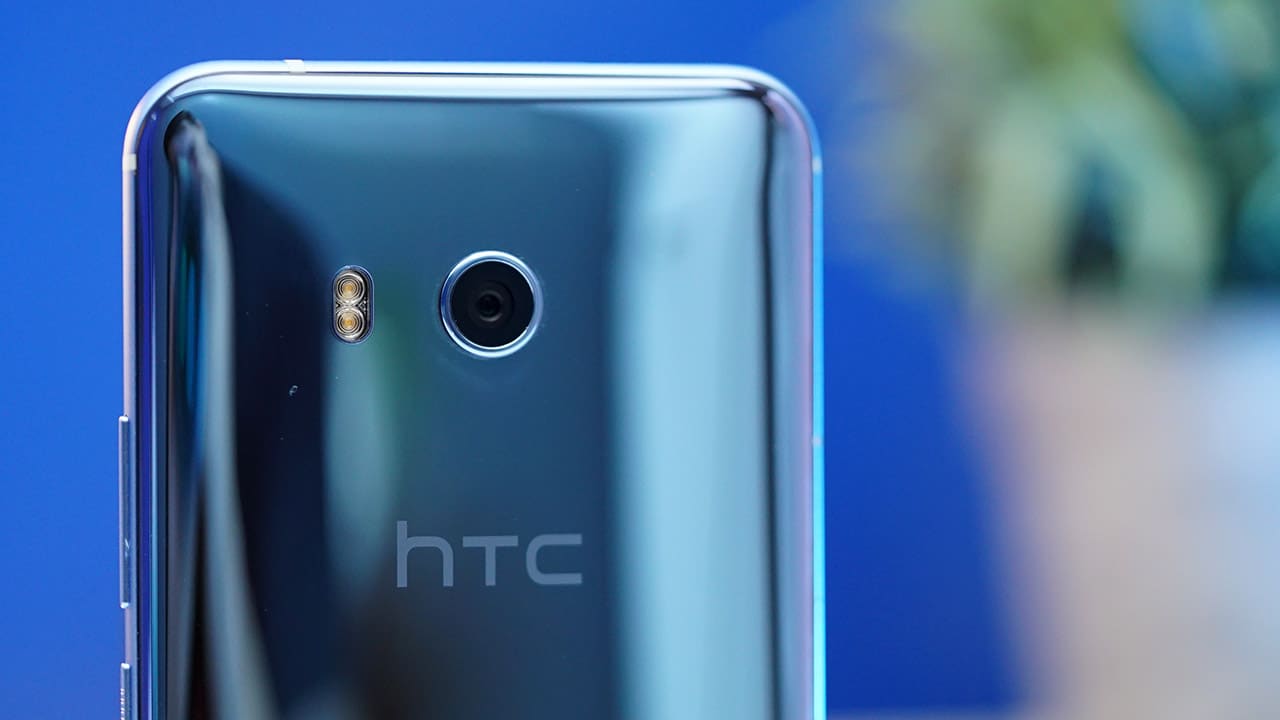
To beat the best, you have to know their product, learn from it, and make something even grander.
That’s the formula HTC followed: Manufacturer the Pixel under Google’s guidance, study Android’s blueprints, and create a smartphone with all that in mind.
The process took a while to complete — over half a year after the Pixel launched — but the U11 with its shimmering back speaks for itself. I can tell you as early as now that it beats Google’s flagship at its own game.
Except, the wasn’t very clear at first. HTC’s marketing push for the U11 highlights the gimmicky Edge Sense feature, which allows you to squeeze the handset for a function of your choice. Heck, the primary slogan is “Squeeze for the Brilliant U.” It’s a shame, since this smartphone isn’t some one-trick pony.
I admit to constantly using Edge Sense for activating the LED flashlight; being able to grip the phone a little harder in total darkness is a lot more useful than you’d expect. But for me, that’s as far as its usefulness goes.
I’d rather say “Okay, Google” to activate Google Assistant from standby, double-press the power button to turn on the camera app at anytime, or simply swipe through my app drawer and settings to access everything else.
There were times when Edge Sense would simply get in the way. An accidental squeeze meant shining a bright flash on my light-sensitive eyes — or worse, at an unsuspecting friend or stranger in the elevator (the latter actually happened).
Sure, you could adjust the pressure sensitivity of the feature, but delving any further into the gimmick meant missing out on the U11’s true strengths, namely the camera, silky smooth performance, and surprisingly, the incredible battery life.
Let’s start with the camera. As mentioned in our launch article, the U11 currently has the highest-rated smartphone shooter in the world based on DxOMark’s well-respected test. A score of 90 puts it above the 89 points of the former champ, the — you guessed it — Google Pixel.
As a preacher of real-world experience over fancy digits on data sheets, I have to agree with the numbers for once and say that HTC’s pride and joy does indeed edge out the Google phone by a… pixel. That says a lot, because the Pixel handily won our smartphone camera comparison earlier this year, and competed quite well against the more advanced Samsung Galaxy S8.
On top of that, the U11 comes with this thing called 3D audio recording, which maximizes the four microphones installed on the phone to record sound from all directions during video shooting. It also amplifies audio from where you zoom in, but I honestly couldn’t tell the difference, even with the pleasantly loud stereo speakers (one on the bottom for bass and another in the earpiece for highs and mids).
While we’re on the topic of sounds, let’s get this out of the way: This phone does not have a 3.5mm audio port. It sucks, and is something I have to deal with whenever I want to hook it up to my car’s speakers or any of my old non-wireless headphones. Sure, there’s a USB-C to audio jack adapter in the box, but that doesn’t solve the issue of charging while being plugged in.
HTC feels like it did enough though for audiophiles. Another bundled accessory is a pair of USonic adaptive earphones that plug directly into the phone’s lonely USB-C port. The “adaptive” part means the earphones adjust their output to the shape of your ears for a more optimized listening experience. If that doesn’t sound (pun intended?) high-tech enough, know that they come with active noise cancellation, as well — perfect for shutting out noisy officemates or that loud, never-ending construction outside your window.
Talking about how great the audio-visual splendor of the U11 is, you almost forget that this phone is, again, marketed as that handset you squeeze. That’s the point I’m trying to drive at: You have to look beyond what the brochures say to see how great this phone truly is. And I haven’t even begun focusing on performance or battery life yet.
The U11 is one of the few smartphones blessed with Qualcomm’s super-fast, incredibly efficient Snapdragon 835 chipset. Although not the first to make use of it — hot picks like the Galaxy S8, OnePlus 5, and Sony Xperia XZ Premium were ahead of the curve — HTC somehow managed to, ehem, squeeze out more of the processor’s potential.
Having reviewed all the aforementioned phones, I can claim with certainty that the U11 is just as fast as any of them, despite HTC applying the heaviest Android skin of the bunch. Its Sense UI feels — how do I put this — outdated. Having a separate button for the app drawer, no continuous scrolling for the app library, and unintuitive main settings and quick settings layout feels like I’m back in 2016.
I’ve given so much praise to the OnePlus 5 (and Pixel last year) for its steroid-fueled fluidity, but this phone can definitely compete. Extra credit goes to the variant I was privileged enough to review; it has 6GB of memory and 128GB of storage, both of which are still generous by today’s standards.
So, wait. Wouldn’t all that power translate to terrible battery life? On the contrary, the U11 has beastly endurance considering how smallish the capacity is (only 3000mAh) and how densely packed the pixels on the display are (a resolution of 2560 x 1440 within a 5.5-inch LCD).
I seriously wasn’t expecting a single charge to last this long. With moderate usage, which entails holding back on checking Instagram and Facebook every hour, I can get through Saturday morning to Sunday night without turning to the charger.
On weekdays, when I must be on my phone every waking minute, I can still manage over five hours of screen-on time before the battery cries for juice at the end of the day. That’s mighty impressive! Other smartphones with the same internals average around four hours of screen-on time during the same span; in comparison, the battery life kings of Xiaomi, specifically the Mi Mix and Redmi Note 4X, get up to six hours.
It’s possible to extend its life even further by turning off constantly active features like Sense Edge and Google Assistant’s voice detection. As you’d expect, I wouldn’t mind deactivating the former for greater longevity, but the latter is another reminder why the U11 trumps the Pixel.
You see, the Pixel was such a hit last year for offering two things: the best-performing camera in the market and exclusive access to Google Assistant at the time. As you can already tell, the U11 has both and more. In addition, HTC solved another one of the Google phone’s problems: waterproofing.
Yes, the U11 isn’t just a pretty sight; it has IP67-rated water and dust resistance, which is a technical way of saying it can withstand accidental splashes and dunks in a toilet. However, this doesn’t mean you can get reckless with it — I haven’t done any drops tests, but one solid drop could spell doom for its glossy glass back.
It’s such a beauty… until you get scuffs and ugly smudges on the rear. Even though HTC offers a plastic case in the package, I just can’t bring myself to putting one on and ruining the aesthetics. Funnily enough, there’s also an included cleaning cloth if you’re willing to wipe it down before every meeting or date.
I just wish I had a chance to review the solar red variant. Having seen it up close during the Philippine launch, I’ve been wanting one, badly. Not that the “amazing silver” I have with me isn’t any good; I simply can’t accept it being color silver. It’s very much light blue at any angle. HTC argues that their sapphire blue model is the true blue, so we have that.
If I were to nitpick, the thin antenna lines around the frame ruin an otherwise seamless design. It’s necessary though for getting a strong cellular signal (because, boy, does the U11 pick up 4G+ wherever I go), and it’s less jarring than Google’s half-glass, half-weird implementation on the Pixel.
Now, this brings us to the question: Is HTC’s best-ever smartphone your GadgetMatch?
I’m inclined to say yes for a variety of reasons and consumer types. And yet, the U11 is ultimately sandwiched between other Snapdragon 835-powered devices.
With a starting price of US$ 649 (PhP 36,990 for my review unit in the Philippines), it’s significantly more expensive than the similarly equipped OnePlus 5 and Xiaomi Mi 6; and despite being cheaper than the Galaxy S8 and Xperia XZ Premium, the U11 doesn’t have the former’s gorgeous Infinity Display or the latter’s 4K screen resolution, as well as either’s audio port.
In that case, what does the U11 offer that the others don’t? A marginally better camera, greater attention to audio output and recording, noticeably longer battery life, and… wait for it… a squeezable body.
It’s only fitting we conclude this review with yet another mention of Sense Edge. In the end, it somehow makes sense to highlight this edge.

Reviews
Challengers review: A thrilling drama wrapped as a tennis anime
Catch it in Ayala Cinemas starting April 24th

Tennis is more than just hitting a ball really hard with a racquet. There are player tics, serving techniques, mind games, and, of course, drama off the court. Challengers, starring Zendaya, takes the entire game and turns it into a dramatic thriller worthy of Wimbledon.
In Challengers, Art Donaldson (Mike Faist) is an aging tennis superstar desperate for one more big win. His wife Tashi (Zendaya), a retired tennis star in her own right, does everything to coach Art back to his winning ways. Opposite them is Patrick Zweig, a former-friend-turned-rival, facing Art in the final match of a Challenger.
As premises go, Challengers seemingly presents a straightforward sports drama. It’s a simple one-versus-one, after all. However, the film’s 2-hour-plus runtime hides a more complex drama.
The second-strangest ménage à trois in film
The film starts in media res: the first set of the final match. It doesn’t tell you who Art, Patrick, or Tashi is. It’s just a friendly match. There are, however, questions abound. Why is Zendaya’s character looking intently at one of the players? Why is the other player concerned that she is looking at his rival and not him? Who are these people?
Before you can ponder each question, the film takes you through multiple time jumps. The earliest (and longest) of which — thirteen years ago — sets up the story. Art and Patrick are two best friends and tennis prodigies teaming up to decimate the competition at their school. Everything changes when the two friends catch a match of another young prodigy, Tashi Duncan.
Both friends engage in a friendly competition to see who can successfully flirt with her. The sequence ends in the second-strangest ménage à trois committed to film. (To see the strangest one, catch Alfonso Cuarón’s Y tu mamá también, a clear inspiration to Challengers.)
The time jumps don’t end there. The story quickly volleys back and forth between different times in the past and the present, including years, months, weeks, and even hours ago. Sometimes, the skips result in the cinematic equivalent of whiplash from watching a tennis ball rapidly travel from left to right. But if you just follow the ball, it ends with one of the most thrilling, edge-of-your-seat dramas this year.
Blink and you’ll miss it
Despite how creative the time skips already are, Challengers shines with its subtler elements: the tiny movements, the tics that seasoned sports watchers can catch. Much like how a play-by-play commentator directs a viewer’s attention to what makes a player tick, the film subtly shows you elements of an even deeper story that it may or may not expound on.
Early on, Challengers shows a blink-and-you’ll-miss-it scene featuring Tashi’s knees. If you weren’t paying attention, you might have missed a scar from a surgical incision, hinting at why Tashi retired from the sport.
In that particular example, the film does dwell on it a bit in a past flashback. However, there are plot points that the film just drops on audiences with nary an explanation. For example, you might see telltale injection marks up Patrick’s wrist or a short-but-telling rehab session for Art. The film drops these nuggets only for the viewer to ponder. They’re short, but they paint a compelling picture to complement the action on the court.
It’s a tennis anime
In essence, Challengers is just about a tennis match between two emboldened competitors. However, like an anime battle that takes ten episodes to resolve, the film understands that the sport is not just about results: it’s about all the tiny movements, strategies, and dramas. If Wimbledon was this thrilling all the time, I should probably tune in a lot more.
Challengers shows exclusively in Ayala Cinemas starting April 24th.
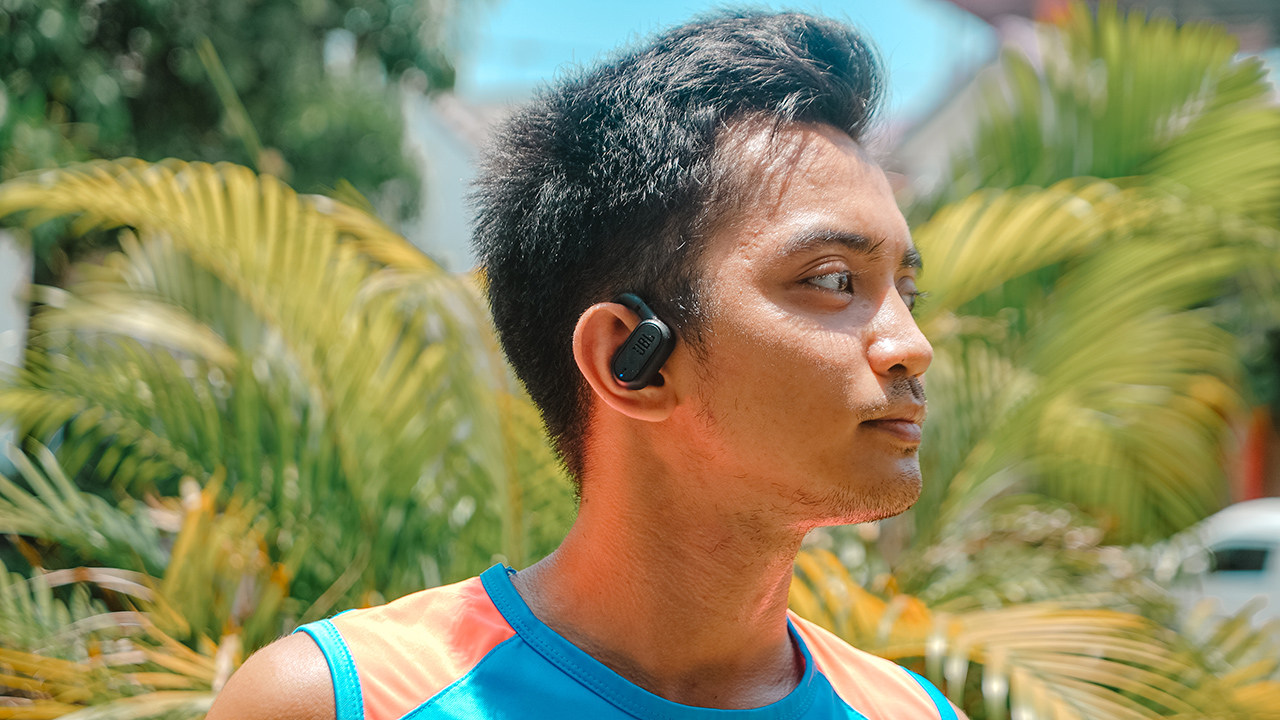
Running has been a form of meditation for most people. To some, it’s a time where your mind goes blank, allowing you to have a break from your stimulated mind.
For others, like yours truly, it’s a moment to sort out thoughts and emotions after having a preoccupied day. A common denominator between runners is doing the activity alone, accompanied only by their smartwatches, a hydration flask, and good music.
I’ve been using true wireless earbuds to accompany me on my runs, but the advent of JBL Soundgear Sense piqued my curiosity.
What is it like to use open-ear headphones when out for a run? To find the answers, I used the Soundgear Sense during my ongoing race season.
Take the long way home
As I put on mileage for my upcoming races, I have been required by my coach to add more slow runs to improve my aerobic base. That entails long, boring runs for an hour or two.
Imagine the agony of finishing a minimum of 10-kilometers by relying on your heart rate and not your pace. That was when I sought solace from the JBL Soundgear Sense.
I didn’t realize that having open-ear headphones would allow me to take on scenic and busy routes without worry that a car might hit me.
Unlike when I use true wireless earbuds that fit snugly in my ears, the Soundgear Sense are hooked and clipped on the curve of my ears without covering the ear canal.
This allowed me to hear my surroundings while still enjoying my favorite songs from Taylor Swift and BINI, a rising P-pop girl group.
Open but still private
Even if the Soundgear Sense has an open-ear design, rest assured that there’s zero sound leakage. JBL’s OpenSound technology made sure that the sound pressure is directed through waves towards the ears, while also reducing sound dispersion.
There’s a certain shame in having people find out whom you’re listening to. Maybe because you don’t intend to share the music you’re enjoying. But if you opt to share your jam, might as well have a Bluetooth speaker, right?
That’s why I liked the idea of keeping it open but still private — in relationships and my wearable. I get to enjoy “Pantropiko” and “Salamin, Salamin” by BINI all by lonesome, while still attuned to my surroundings.
It also helps that each earbud has a 16.2mm driver with a unique bass-enhancing algorithm. The sound allowed me to immerse myself in the songs I was playing, but still aware of the external noises of the streets. Somehow, the Soundgear Sense felt like a second, inner voice whispering thoughts through music.
Hybrid design for hybrid athletes
I don’t just run. I also lift on the same day right after running. Being a hybrid athlete allows me to prepare my body from the demands of multi-sports training and partaking on a Spartan race.
I like how the Soundgear Sense has a hybrid design that makes it apt for different type of workouts. Its adjustable earhooks are clipped perfectly, which doesn’t fall off even when I’m doing plyometrics. It’s also steadily in place even if I sprint and/or do some speed training.
Even when I’m heavily sweating, the Soundgear Sense didn’t slip off. With an IP54 rating, it’s dust-, splash-, and sweat-resistant.
Also, the way it’s designed is secured to fit on whatever activities you have, regardless of sweating. Except gymnastics and parkour, though.
The Soundgear Sense might fall off after you hang or flip from those extreme activities that require being suspended in the air.
For added security, there’s an included neckband inside the box. However, I hate having something dangling on my nape so I never used it.
Moreover, I couldn’t last more than an hour having it clipped even with a supposed hybrid design. It hurts my ears eventually, and I feel like someone was pinching my ears and I couldn’t do anything.
If I have runs for more than an hour, I’d opt not wearing both earbuds.
Easy connectivity
One thing I like about JBL is how easy it is to connect your wearables to your smartphones, be it an iPhone or an Android.
Once both devices are paired, flipping open the case will instantly connect the Soundgear Sense to your smartphone.
While running, I don’t have to constantly check my phone since the Soundgear Sense, along with my Garmin epix Pro (Gen 2), helps me stay connected. With just a single flick on the earbud, I can control my music, volume, and calls.
My friend, Betty, called me one time while I was out for an easy run and she barely realized I was running until I gasped for my breath when running on a steep incline. It’s convenient to have crisp and crystal-clear calls within your reach.
And to make it more convenient, the touch controls can be personalized to your liking. On the left earbud, it’s usually the volume control.
One tap and it increases the volume, while double tapping decreases it. When someone calls, you can double tap to respond or you can tap and hold to reject the call.
The right earbud uses the same call control, but it’s automatically set for playback control. You can switch earbuds depending on the gesture you prefer.
All of these customizations can be done using the My JBL Headphones app.
Definitely long lasting
I have had the Soundgear Sense for two weeks now, and both earbuds still have a half battery life from a single charge. As of writing, the left earbud still has 51% while the right earbud has 56%.
Thanks to its charging case, both earbuds keep recharging every time they’re stowed inside.
But if you’re wondering why the left earbud has a lower battery life, it’s not because I spend too much time watching adult-rated content.
A lot of times, I run with just the left earbud clipped on my ear to stay alert from my surroundings. Even with OpenSound technology, I tend to get lost in the music I’m listening to whenever I have both earbuds hooked.
Considering I’ve amassed more than 70km of running mileage for two weeks with almost 10 hours of running, the Soundgear Sense surprised me with its battery life.
I haven’t charged it since then, which made me wonder how fast it would really be, if I get to drain it down to zero and juice it back up to 100. Perhaps, stay tuned on my Instagram and TikTok accounts?
The Soundgear Sense is expected to let you listen wirelessly for up to 6 hours. You get an extended life of another 18 hours through the charging case. A quick 15-minute charge through the Type-C port gives an additional 4 hours of music.
Is this your GadgetMatch?
For an athlete, the JBL Soundgear Sense surely makes every run magical. The design and technology were innovated with runners in mind. The device integrates seamlessly to any type of active lifestyle.
It will boil down to preference, whether you enjoy an open-ear design clipped onto your ears or you’d enjoy an earbud blocking your ear canal.
As for me, I think I’ll switch and pick the Soundgear Sense to accompany me in my race season. It helps me immerse myself in good music, stay connected, while keeping me attuned to my surroundings. This ensures my safety when out for a run.
It’s easily a GadgetMatch for all types of athletes dedicated to fulfilling their training assignments. It’s also for fitness enthusiasts entering their “runnerist” era.
The JBL Soundgear Sense retails for PhP 9,499. It is available via JBL’s website and select, authorized retailers.
Reviews
realme 12+ 5G review: One month later
What is it like to spend a month with a midrange smartphone?

What is it like to spend a month with a midrange smartphone?
For someone spoiled with high-end, flagship smartphones, a watered-down experience terrifies me. I couldn’t fathom using just a midrange smartphone, even if I’m counted as a casual user.
But spending a month with the realme 12+ 5G gave me a new perspective on what midrange smartphones at 2024 can do.
Powerhouse at a fraction
A lot of times, I’ve used the realme 12+ 5G to play Mobile Legends: Bang Bang. I know, I know. It’s 2024 and I’m still playing the same old MOBA but it’s a game I know all too well that helps me de-stress after a long day.
See, I’m an athlete balancing my work and life. Sometimes, I just want to rot in bed while playing on my phone.
The realme 12+ 5G helped keep me sane thanks to its lag-free gameplay. Not once did I feel any heat or slowing down even while playing in an Ultra Graphics and Super High Frame Rate setting.
The Vapor Chamber Cooling System came into play, dissipating the heat so even if under heavy usage, the gameplay is still optimal.
Moreover, the realme 12+ 5G uses a MediaTek Dimensity 7050 chipset. When you combine this with a 12GB dynamic ram that’s expandable through your storage space, you won’t have to worry about a watered-down experience from using a midrange device.
The RAM can take up from 4GB up to 12GB to be re-allocated from the 256GB internal storage. Though, I only used 4GB since I didn’t feel the need to turn it up to the highest configuration. It’s already smooth even when multi-tasking.
It may not be as smooth as the flagship smartphones I held, but it’s enough particularly for people who just needs a smartphone they can use for their everyday lives. However, if you want a midrange device dedicated for an even more intensive gameplay, I’d suggest looking elsewhere.
Daily companion for viewing, listening
When I was on my way home from my training, I drove past a busy road in Pasig City where vendors are in the streets, bystanders are frolicking, and loafers gossip while taking space through the plastic stools they sat on spread out near the sidewalk.
What do they have in common? Smartphones. There was a realization that the Filipino masses rely on their devices to be entertained and connected.
I have a feeling that if I wasn’t a multi-passionate person with an insanely hectic schedule, I’d bury my head on a smartphone, too.
This is where having a spectacular audio-visual performance comes into play, especially for budget and midrange devices. Luckily, the realme 12+ 5G has a 120HZ Super AMOLED Display and Dual Stereo Speakers.
It’s one of the reasons why I started playing Mobile Legends: Bang Bang again when I was decompressing for the day.
Aside from doomscrolling on TikTok, I just like it when the display is fluid, vivid, and smooth while the audio can be as loud and immersive. Unlike most midrange smartphones, the audio-visual performance is always a hit or miss.
Sometimes, they have an excellent screen while the audio suffers, or vice-versa. The realme 12+ 5G just have it both.
Capture it, remember it
The realme 12+ 5G uses a 50-megapixel SonyLYT 600 OIS Portrait Camera, an 8-megapixel 112° wide-angle lens, a 2-megapixel macro sensor, and a 16-megapixel selfie camera on the front.
I used the smartphone to capture photos I send to my loved ones. From selfies, coffee runs, hotel visits, group photos, food shots, and just anything and everything in my life.
The quality for low-light shots is a hit or miss, but for photos taken during daytime and with good lighting? It’s just spectacular.
Here are some sample photos to look at:
Portraits & Selfies
Food
Sceneries
Everyday photos
Real on reliability
The realme 12+ 5G’s battery capacity is just *chef’s kiss*.
Its ability to retain its battery life even on standby is just incredibly helpful for someone who keeps forgetting to charge his devices.
The realme 12+ 5G lasts long enough when out for the day, and even if you spend a lot of hours playing games and doomscrolling.
One time, I played Mobile Legends: Bang Bang for three hours straight from a full charge, and I still had enough juice to keep playing. That 5000mAh battery surely is a lot of juice that doesn’t drain easily. I had to be the one to give up playing since it hurt my eyes already.
Charging it with 67W SuperVOOC, the realme 12+ 5G gets full charge in less than an hour. This is why even if I forget to charge it at night, I just have to plug the charger in the USB-C port while I was taking a bath and prepping for work.
Could’ve been a real premium
Aside from its performance and capabilities, the realme 12+ 5G comes with a strong and beautiful exterior. The unit I have came in Pioneer Green, resembling an emerald-touch of old money.
Without a plastic case, it’s soft, feels luxurious, and easy to hold even with a boxy frame. At a glance, it’s even more beautiful with its luxury watch-inspired design, thanks to designer Ollivier Savéo.
For a midrange device, realme has a knack for making its devices look and feel sophisticated. Furthermore, it’s dust and splash proof with its IP54 rating. It’s a win-win, right? Strong and pretty at the same time.
My only issue would be the realme UI 5.0 based on Android 14 that’s packed with bloatware. Look- and feel-wise, the realme 12+ 5G would be a premium stunner, even with its camera, audio-visual, and battery performance.
But the UI design along with the unnecessary bloatware made it cheap and annoying to look at.
Is this your GadgetMatch?
The realme 12+ 5G delivers what you’d expect out of a midrange smartphone. It’s premium-looking, long-lasting, offers reliable performance, and captures vivid portraits and pictures.
It’s easily a GadgetMatch for casual users requiring enough power and juice on a device that looks pretty and strong. If the realme 12 Pro+ 5G is a midrange marvel, consider the realme 12+ 5G almost the same, but at a lesser cost.
It retails for PhP 19,999 for the 12GB+256GB variant, while the 8GB+256GB unit is priced at PhP 17,999.
-

 Features1 week ago
Features1 week agoFortify your home office or business setup with these devices
-

 Events2 weeks ago
Events2 weeks agoStellar Blade: PlayStation taps cosplayers to play Eve for game’s launch
-

 Gaming2 weeks ago
Gaming2 weeks agoThe Rogue Prince of Persia looks like an ultra-colorful roguelite
-

 Accessories2 weeks ago
Accessories2 weeks agoLogitech unveils G Pro X 60 gaming keyboard: Price, details
-

 Reviews1 week ago
Reviews1 week agorealme 12+ 5G review: One month later
-

 Gaming2 weeks ago
Gaming2 weeks agoLenovo confirms development of a Legion Go 2
-

 Deals2 weeks ago
Deals2 weeks agoTCL P635 TV: Big savings for TCL’s anniversary
-

 Gaming1 week ago
Gaming1 week agoNew PUMA collection lets you wear PlayStation’s iconic symbols


